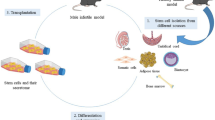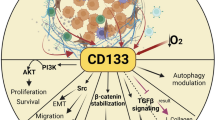Abstract
Induced pluripotent stem (iPS) cells are an attractive source for potential cell-replacement therapy. However, transplantation of differentiated products harbors the risk of teratoma formation, presenting a serious health risk. Thus, we characterized Nanog-expressing (undifferentiated) cells remaining after induction of differentiation by cytological examination. To induce differentiation of iPS cells, we generated embryoid bodies (EBs) derived from iPS cells carrying a Nanog–green fluorescent protein (GFP) reporter and then injected GFP-positive and GFP-negative EBs into nude mice. GFP-positive EB transplantation resulted in the formation of immature teratoma grade 3, but no tumors were induced by GFP-negative EB. GFP-positive cells revealed significantly lower cytoplasmic area and higher nucleus/cytoplasm ratio than those of GFP-negative cells. Our results suggest that morphological analysis might be a useful method for distinguishing between tumorigenic and nontumorigenic iPS cells.







Similar content being viewed by others
References
Mason C, Dunnill P. A brief definition of regenerative medicine. Regen Med. 2008;3:1–5.
Evans MJ, Kaufman MH. Establishment in culture of pluripotential cells from mouse embryos. Nature. 1981;292:154–6.
Tsuji O, Miura K, Okada Y, et al. Therapeutic potential of appropriately evaluated safe-induced pluripotent stem cells for spinal cord injury. Proc Natl Acad Sci USA. 2010;107:12704–9.
Thomson JA, Itskovitz-Eldor J, Shapiro SS, et al. Embryonic stem cell lines derived from human blastocysts. Science. 1998;282:1145–7.
Takahashi K, Yamanaka S. Induction of pluripotent stem cells from mouse embryonic and adult fibroblast cultures by defined factors. Cell. 2006;126:663–76.
Takahashi K, Tanabe K, Ohnuki M, et al. Induction of pluripotent stem cells from adult human fibroblasts by defined factors. Cell. 2007;131:861–72.
Miura K, Okada Y, Aoi T, et al. Variation in the safety of induced pluripotent stem cell lines. Nat Biotechnol. 2009;27:743–5.
Okita K, Ichisaka T, Yamanaka S. Generation of germline-competent induced pluripotent stem cells. Nature. 2007;448:313–7.
Silva J, Nichols J, Theunissen TW, et al. Nanog is the gateway to the pluripotent ground state. Cell. 2009;138:722–37.
Kuroda T, Yasuda S, Kusakawa S, et al. Highly sensitive in vitro methods for detection of residual undifferentiated cells in retinal pigment epithelial cells derived from human iPS cells. PLoS One. 2012;7:e37342.
Chambers I, Colby D, Robertson M, et al. Functional expression cloning of Nanog, a pluripotency sustaining factor in embryonic stem cells. Cell. 2003;113:643–55.
Chou YF, Chen HH, Eijpe M, et al. The growth factor environment defines distinct pluripotent ground states in novel blastocyst-derived stem cells. Cell. 2008;135:449–61.
Kanatsu-Shinohara M, Inoue K, Lee J, et al. Generation of pluripotent stem cells from neonatal mouse testis. Cell. 2004;119:1001–12.
Wernig M, Zhao JP, Pruszak J, et al. Neurons derived from reprogrammed fibroblasts functionally integrate into the fetal brain and improve symptoms of rats with Parkinson’s disease. Proc Natl Acad Sci USA. 2008;105:5856–61.
Rosai J. Ackerman’s surgical pathology (vol 1). 8th ed. St Louis: Mosby-Year Book; 1996.
Norris HJ, Zirkin HJ, Benson WL. Immature (malignant) teratoma of the ovary: a clinical and pathologic study of 58 cases. Cancer. 1976;37:2359–72.
Okita K, Nakagawa M, Hyenjong H, Ichisaka T, Yamanaka S. Generation of mouse induced pluripotent stem cells without viral vectors. Science. 2008;322:949–53.
Nakagawa M, Koyanagi M, Tanabe K, et al. Generation of induced pluripotent stem cells without Myc from mouse and human fibroblasts. Nat Biotechnol. 2008;26:101–6.
Nakagawa M, Takizawa N, Narita M, Ichisaka T, Yamanaka S. Promotion of direct reprogramming by transformation-deficient Myc. Proc Natl Acad Sci USA. 2010;107:14152–7.
Zhou W, Freed CR. Adenoviral gene delivery can reprogram human fibroblasts to induced pluripotent stem cells. Stem Cells. 2009;27:2667–74.
Acknowledgements
We thank Satoshi Tomiyasu, Naofumi Hosoda, Atsushi Tomioka, Yukihiko Osawa, Hirotoshi Mochida, Rena Furumoto, and Shiori Tochihara (Graduate School of Science and Industrial Technology, Kurashiki University of Science and the Arts) for their contributions to this study.
Conflict of interest
None.
Author information
Authors and Affiliations
Corresponding author
Rights and permissions
About this article
Cite this article
Nishimori, M., Yakushiji, H., Mori, M. et al. Tumorigenesis in cells derived from induced pluripotent stem cells. Human Cell 27, 29–35 (2014). https://doi.org/10.1007/s13577-013-0078-3
Received:
Accepted:
Published:
Issue Date:
DOI: https://doi.org/10.1007/s13577-013-0078-3




